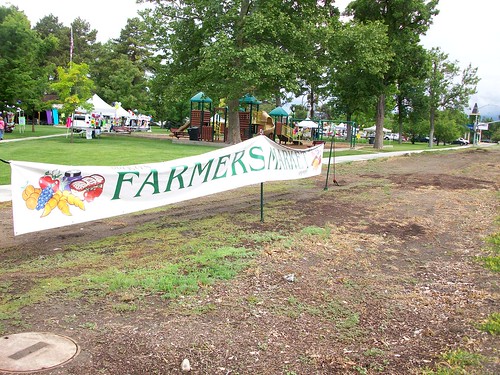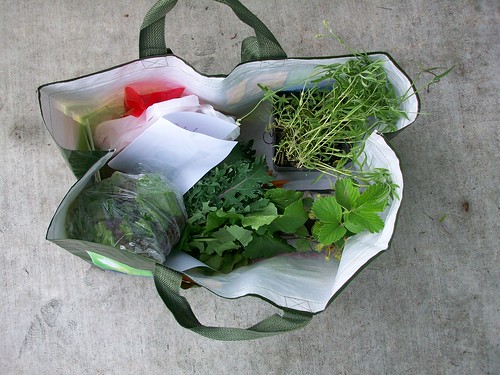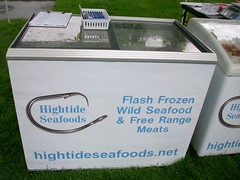
To market, to market... The first farmer's market of the year, that is. This is the first year that I will be taking advantage of our local farmer's market. For at least a year I've seen the signs up advertising it and kept thinking that I should check it out. Well, since reading Animal, Vegetable, Miracle (see side bar websites), patronizing the farmer's market has become more than a passing thought.
Perhaps you want to ask, "But Cotton, why should I patronize my local farmer's market? What does that have to do with going green?"
Well, I am merely a new convert to all of this, so I probably won't be able to convince you with all the important facts involved in food politics, but here are some things you can consider:
1. Where does the food you eat come from?
Bananas? (My favorite indulgent food to talk about because it's so obvious.) Bananas come from tropical locales. I live in the Rocky Mountains. People around here go to Banana Republics when they're taking an expensive and exotic vacation. Many fossil fuels used to bring them to your table. (Incidentally, I love bananas. It has been a real sacrifice to give up bananas. So I make sure I eat them whenever someone else makes fruit kabobs. This sacrifice has had the added effect of making bananas extra tasty when I get them.)
Watermelon in January? Those came to you from somewhere where it's hot in January. (ie not the Rocky Mountains)
2. What kind of farming methods were used to cultivate and harvest your food?
Does your food come to you from a large agribuisiness corporation whose emphasis is on the bottom line and not on taste and sustainability? Is it a monoculture farm where crops are never rotated and therefore continually sucking all the nutrients out of the soil requiring ever increasing amounts of artificial fertilizer, chemical pest control, and gene manipulation?
3. Who does your purchasing dollar benefit?
Some CEO and a handful of stock holders? Migrant laborers working for pennies and living in Steinbeckian circumstances?
When you go to the farmer's market you will get:
Fresh food that's in season from right down the street grown on small(er) farms that are usually family owned. You can ask the farmer about his or her farming practices. Most are using organic methods though they probably won't be "certified." Your dollar will go to this farmer and his family who lives in your community. I even noticed a booth run by a couple of youths earning money for an educational trip to Washinton, D.C. next year. Another booth had a ten year old selling eggs. My grocery dollar is helping local youth learn responsibility and money management. Brilliant!
Another fun thing you'll get from the farmer's market is other cool items locally crafted like woodcarvings and jewelry.
I just really appreciate the sense of community I got from going to the farmer's market and feeling connected to the people who grew my food for the week.
Here's what I bought this week:

A bag of greens
Kale
Turnip greens (never tried these before--what an adventure!)
Carrots
Radishes
A strawberry plant
A lavender plant
Artisan bread
These were my indulgences:

Wild caught Alaskan King Salmon (not exactly local, but the guy gets it from his commercial fisherman dad. Also, not exactly cheap--it is, after all Wild caught Alaskan King Salmon)
Pain au chocolat (amazing!)
a dark chocolate truffle
necklace and two pair of earrings ($9-what a deal!)
Also saw:
The booth for the Co-housing or Eco-village that's starting to take shape in this county. (see the poll on the side bar)
Here are some websites I picked up:
hightideseafoods.net (the salmon)
diva-bella.com (the necklace)
utahvalleycommons.com (the eco-village)
grittypretty.blogspot.com (the blog of the founder of the Provo Farmer's Market-surprisingly, or not, my generation. Here's a photo of her husband Oliver (who is a permaculture activist--a subject for another blog, perhaps??).

To find your own farmer's market go here:
http://apps.ams.usda.gov/FarmersMarkets/
Or try google-ing "farmers markets" and your town.
I can hardly wait until next week!
PS We ate the salmon last night for dinner. It was EXCELLENT!

